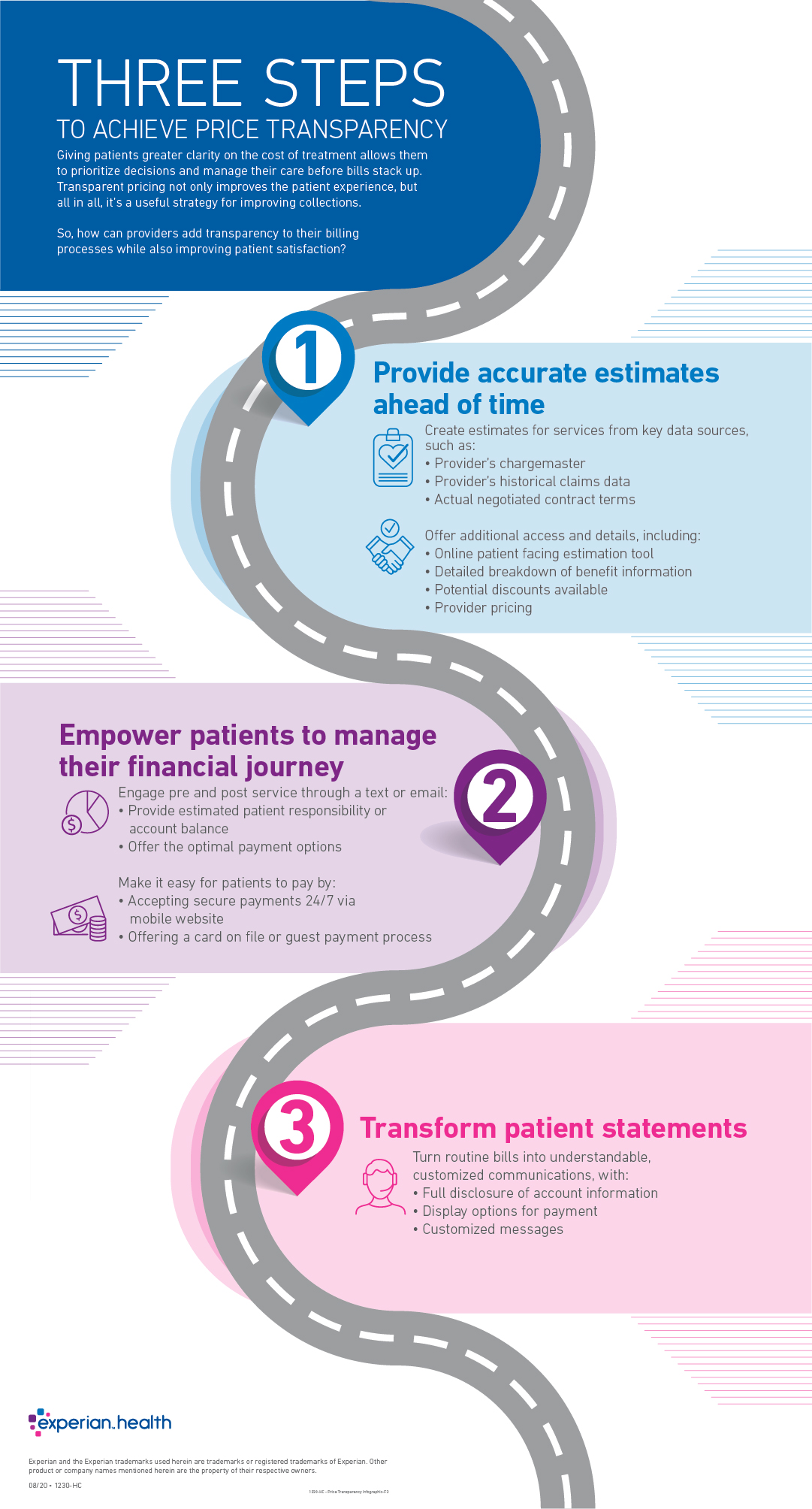The regulatory requirements for price transparency are in full effect. The Centers for Medicare and Medicaid Services (CMS) is moving forward with the OPPS Price Transparency Final Rule (CMS-1717-F2), which states that hospitals must provide transparency that will help consumers understand medical costs and make informed decisions.
At this point, it is recommended that hospitals begin to form a strategy for price transparency.

The concept behind price transparency is simple: provide transparency that will help consumers understand medical costs and make informed decisions. Experian Heath’s commitment is simple: provide solutions that benefit the patient and the provider, that improve collections and patient satisfaction.
Discover how Experian Health can help you succeed with price transparency.



